




When it comes to household cleaning, many people wonder about the effects of mixing different chemicals together. One common combination that people often ask about is bleach and bicarbonate of soda. Bleach and bicarbonate of soda are both powerful cleaning agents on their own, but what happens when you mix them together? In this article, we will explore the effects of this combination and discuss whether it is safe to use.
Bleach is a strong oxidizing agent commonly used for disinfection purposes. It is effective at killing germs and removing stains, making it a popular choice for cleaning bathrooms, kitchens, and other areas of the home. However, bleach is also a corrosive chemical and can cause damage if not used correctly.
Bicarbonate of soda, also known as baking soda, is a mild alkaline compound that is often used as a cleaning and deodorizing agent. It is a versatile product that can be used for a variety of household tasks, such as removing odors from carpets, cleaning silverware, and even extinguishing small grease fires. Baking soda is non-toxic and environmentally friendly, making it a popular choice for those who prefer natural cleaning solutions.
So, what happens when you mix bleach and bicarbonate of soda? The combination of these two chemicals can produce harmful gases, such as chlorine gas, which can be extremely dangerous if inhaled. It is important to avoid mixing bleach and bicarbonate of soda together, as it can lead to respiratory problems, eye irritation, and other health issues. If you need to clean an area that requires the use of both bleach and baking soda, it is best to use them separately and rinse the area thoroughly between applications to ensure that no chemical reactions occur.
In conclusion, it is not safe to mix bleach and bicarbonate of soda together. Although both chemicals are effective cleaning agents on their own, they should not be combined due to the potential for harmful chemical reactions. It is always important to read and follow the instructions on cleaning product labels and use chemicals in a well-ventilated area to minimize the risk of exposure to harmful gases.
Can You Mix Bleach and Bicarbonate of Soda?
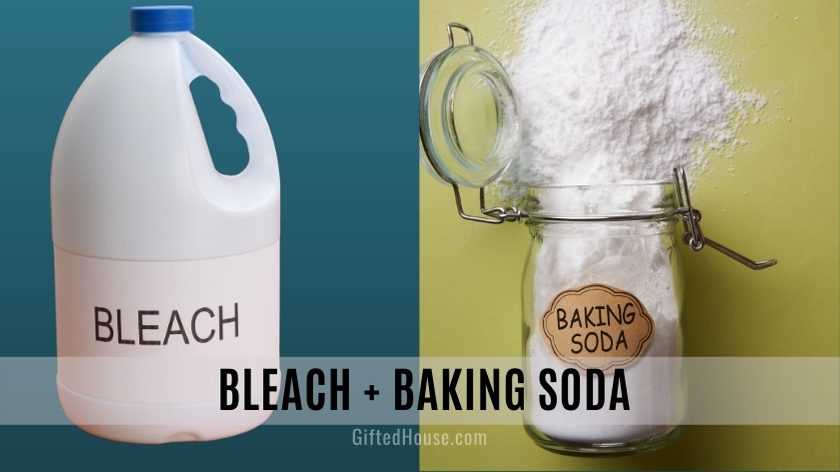
Bleach and bicarbonate of soda, also known as baking soda, are both common household cleaning agents. While they can be effective when used separately, it is important to understand the potential risks and effects of mixing them together.
The Potential Risks
Mixing bleach and bicarbonate of soda can produce harmful reactions. When bleach, which contains sodium hypochlorite, comes into contact with bicarbonate of soda, a chemical reaction occurs. This reaction releases chlorine gas, which is toxic and can be dangerous if inhaled in large amounts.
In addition to chlorine gas, the mixture can also produce other harmful by-products such as chloramine gas and sodium carbonate. Exposure to these gases can irritate the respiratory system and cause eye and throat irritation. In some cases, it can even lead to more severe symptoms such as difficulty breathing and coughing.
The Effects of Mixing
When bleach and bicarbonate of soda are mixed, the reaction produces effervescence, similar to the fizzing effect seen when bicarbonate of soda is mixed with vinegar. However, the mixture also releases toxic gases and by-products, as mentioned earlier.
Safe Alternatives for Cleaning
Instead of mixing bleach and bicarbonate of soda, it is safer to use them separately for cleaning purposes. Both bleach and bicarbonate of soda have their own cleaning properties and can be effective when used correctly.
Bleach is a powerful disinfectant and can be used to kill germs and bacteria. It is commonly used in laundry, cleaning surfaces, and even in pool maintenance.
Bicarbonate of soda, on the other hand, is a mild abrasive and can be used as a natural deodorizer and stain remover. It is often used in cleaning kitchen appliances, removing odors from carpets, and whitening clothes.
Conclusion
Mixing bleach and bicarbonate of soda is not recommended due to the potential risks and harmful effects. It is important to prioritize safety when it comes to cleaning and use these substances separately, following the instructions and precautions provided by the manufacturers.
Remember to always wear protective gloves and ensure proper ventilation when using bleach or bicarbonate of soda for cleaning purposes.
Understanding Bleach
Bleach is a common household cleaning product that is used to disinfect surfaces, remove stains and brighten fabrics. It contains chemicals that can kill bacteria, viruses, and other pathogens, making it an effective disinfectant.
The active ingredient in bleach is sodium hypochlorite, which is a powerful oxidizing agent. It works by breaking down the chemical bonds of substances, such as bacteria or stains, making them easier to remove or destroy. Sodium hypochlorite is highly reactive and can react with a wide range of substances.
Bleach is commonly used to clean and disinfect surfaces in the kitchen and bathroom, as well as to remove stains from clothes. It can be used on a variety of surfaces, including countertops, floors, toilets, and sinks. However, it is important to use bleach safely and follow the instructions on the product label.
Bleach should always be used in a well-ventilated area, as the fumes can be harmful if inhaled. It should also be stored away from children and pets, as it can cause burns and other injuries if ingested or applied to the skin. In addition, bleach should never be mixed with other chemicals, as this can create hazardous reactions and release toxic gases.
When using bleach, it is important to wear protective gloves and goggles to prevent contact with the skin and eyes. It is also recommended to dilute bleach with water according to the instructions on the product label, as using undiluted bleach can be too harsh and cause damage to surfaces or fabrics.
In conclusion, bleach is a powerful disinfectant and stain remover that can be used safely and effectively when used properly. Understanding how bleach works and following safety precautions can help ensure its successful use in household cleaning tasks.
Understanding Bicarbonate of Soda
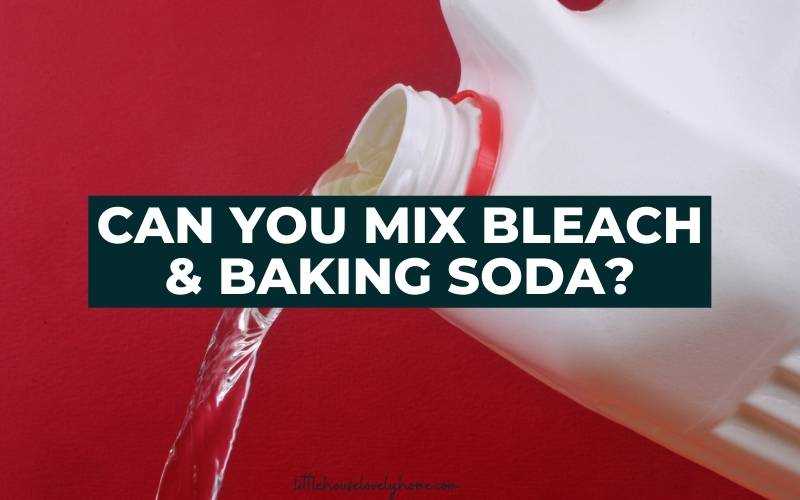
Bicarbonate of soda, also known as sodium bicarbonate or baking soda, is a white crystalline powder that is commonly used in baking and cooking. It has a slightly salty taste and is known for its ability to produce carbon dioxide gas when heated, causing dough to rise and creating a light texture in baked goods.
Baking soda is a versatile ingredient that has a wide range of uses beyond culinary applications. It is a popular natural cleaning agent and deodorizer, as well as an effective remedy for various health issues.
Chemical Composition
The chemical formula for bicarbonate of soda is NaHCO3. It is composed of sodium ions (Na+), hydrogen ions (H+), carbonate ions (CO32-), and water molecules (H2O). When heated, it breaks down into sodium carbonate (Na2CO3), water, and carbon dioxide gas (CO2).
Physical Properties
- Bicarbonate of soda is a white, odorless powder.
- It is soluble in water.
- It has a pH of around 8.3, which makes it slightly alkaline.
- It has a melting point of 50°C (122°F).
Uses
Bicarbonate of soda is commonly used for:
- Baking and cooking
- Neutralizing acid reflux
- Relieving heartburn
- Treating insect bites or stings
- Extinguishing small grease or electrical fires
- Cleaning and deodorizing household items
- Removing stains
- Eliminating odors
Precautions
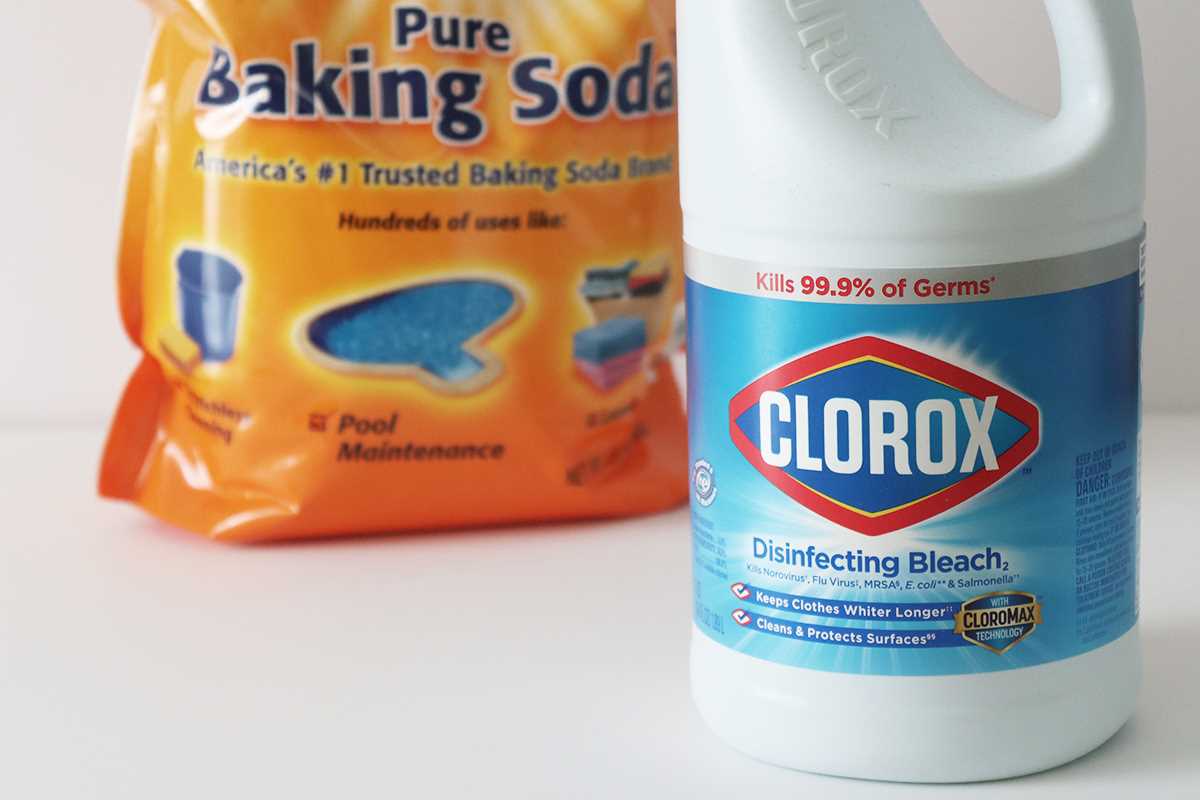
While bicarbonate of soda is generally safe for consumption and use, it is important to be aware of potential side effects and precautions:
- Excessive consumption of baking soda can lead to electrolyte imbalances and affect kidney function.
- It is not recommended for individuals on a sodium-restricted diet or suffering from high blood pressure.
- When using baking soda for cleaning, make sure to ventilate the area properly and avoid inhaling the powder.
- Always read and follow the instructions and warnings on the packaging.
| Chemical Formula | NaHCO3 |
|---|---|
| Common Names | Sodium bicarbonate, baking soda |
| Appearance | White crystalline powder |
| Solubility | Soluble in water |
| pH | 8.3 (slightly alkaline) |
| Melting Point | 50°C (122°F) |
The Chemical Reaction
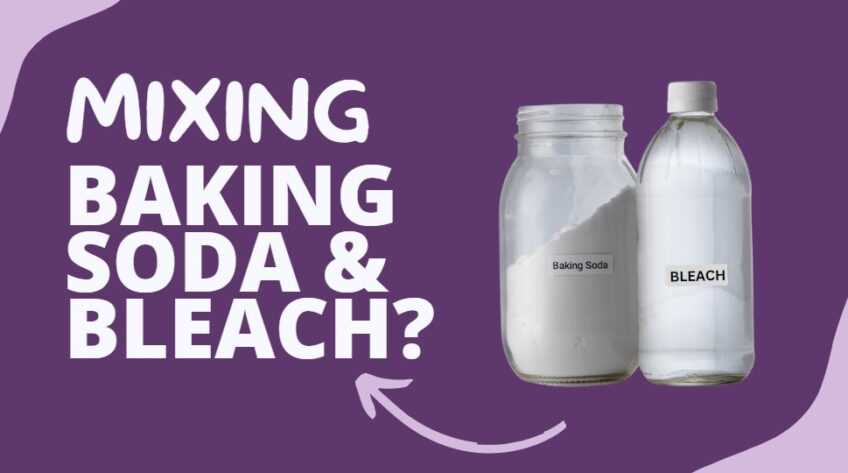
When bleach (sodium hypochlorite) and bicarbonate of soda (sodium bicarbonate) are mixed together, a chemical reaction occurs. This reaction is known as an acid-base reaction, as bleach is a strong oxidizing agent and bicarbonate of soda is a weak base.
Acid-Base Reaction
- When the bleach and bicarbonate of soda are mixed, the bleach donates oxygen ions (O-) to the bicarbonate of soda.
- This creates a new compound called sodium carbonate, along with water and oxygen gas.
- The sodium carbonate (Na2CO3) formed in the reaction is a salt that is commonly used in cleaning products.
Effervescence
- During the chemical reaction, effervescence occurs.
- This means that bubbles of oxygen gas are released as a result of the reaction.
- The effervescence can be seen as fizzing or bubbling in the mixture of bleach and bicarbonate of soda.
Heat Generation
- Another effect of the chemical reaction between bleach and bicarbonate of soda is the generation of heat.
- This is an exothermic reaction, meaning it releases heat as a byproduct.
- The heat generation can be felt as a warm sensation in the mixture.
Potential Dangers
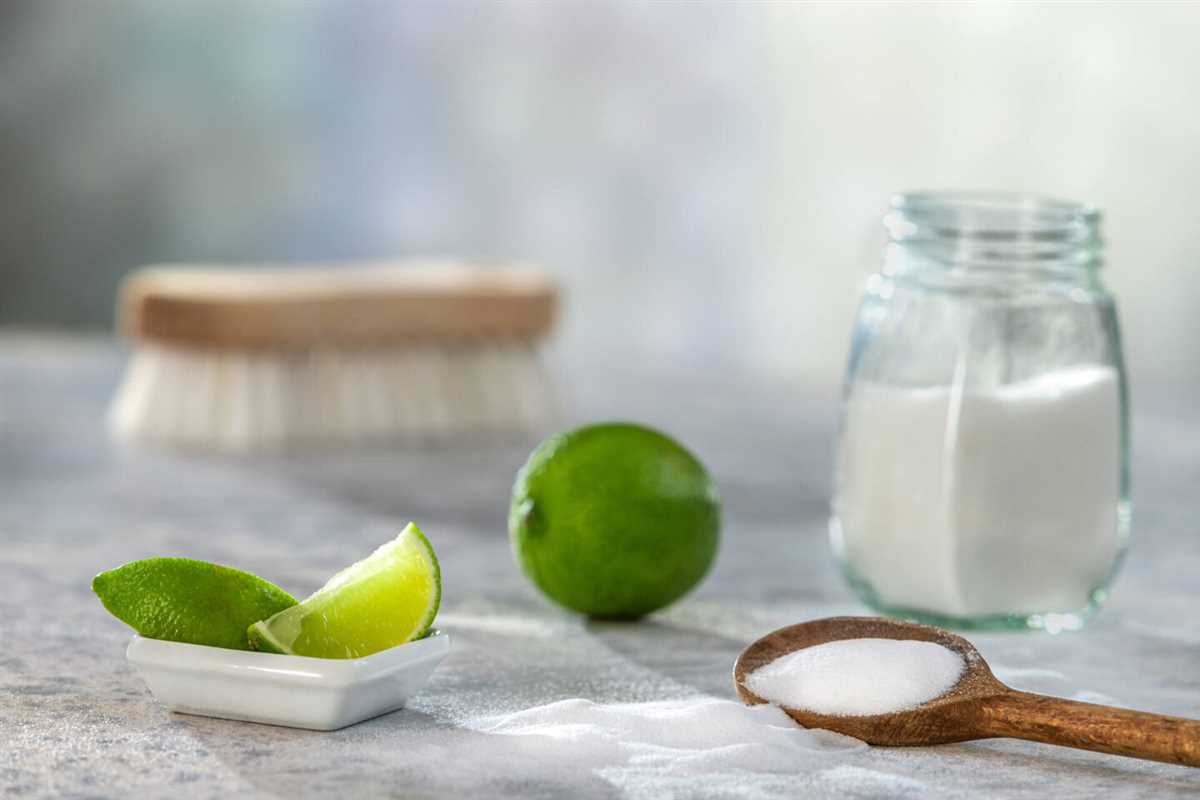
- Mixing bleach and bicarbonate of soda can produce potentially harmful byproducts.
- One of these byproducts is chloramine, which is a toxic gas.
- Chloramine can cause respiratory problems and irritation to the eyes, throat, and lungs.
- It is important to avoid inhaling the fumes produced by mixing bleach and bicarbonate of soda.
Overall, while the chemical reaction between bleach and bicarbonate of soda can be interesting to observe, it is important to exercise caution and avoid mixing these substances together due to the potential dangers involved.
Potential Dangers
- Release of Toxic Fumes: Mixing bleach and bicarbonate of soda can result in the release of toxic fumes. When bleach comes into contact with bicarbonate of soda, a chemical reaction occurs which produces chlorine gas. Chlorine gas is highly toxic and can cause severe respiratory problems, eye irritation, and even death if inhaled in large quantities. It is important to avoid breathing in these fumes and to ensure proper ventilation in the area.
- Skin and Eye Irritation: The resulting mixture of bleach and bicarbonate of soda can be highly irritant to the skin and eyes. Direct contact with the mixture can cause skin burns, rashes, and redness. It can also lead to severe eye irritation, watering, and pain. It is essential to wear protective gloves and safety goggles when handling the mixture to avoid these risks.
- Chemical Burns: Mixing bleach and bicarbonate of soda can create a solution with a high pH level. This alkaline solution can cause chemical burns if it comes into direct contact with the skin or mucous membranes. Chemical burns can be painful, cause tissue damage, and may require medical attention for proper treatment.
- Damage to Surfaces and Materials: The mixture of bleach and bicarbonate of soda can also have damaging effects on certain surfaces and materials. For example, the alkaline solution can corrode and discolour metals, such as aluminum and stainless steel. It can also cause discoloration or damage to fabrics, carpets, and furniture. It is important to be cautious and avoid using the mixture on sensitive or valuable surfaces.
It is crucial to understand and respect the potential dangers associated with mixing bleach and bicarbonate of soda. These risks highlight the importance of carefully following safety precautions and instructions when using cleaning products. It is generally recommended to avoid combining these two substances to ensure the safety of yourself and others.
Safe Alternatives
If you want to achieve similar cleaning or deodorizing effects without the potential risks of combining bleach and bicarbonate of soda, here are some safe alternatives you can try:
- Baking Soda and Vinegar: Mixing baking soda and vinegar can create a bubbly reaction that can help remove stains, clean surfaces, and eliminate odors. Simply combine equal parts of baking soda and vinegar and use the mixture as a scrub or spray.
- Lemon Juice: Lemon juice is known for its natural cleaning properties. It can be used to remove stains, deodorize surfaces, and even brighten white fabrics. Dilute lemon juice with water and use it as a cleaning solution.
- Hydrogen Peroxide: Hydrogen peroxide is a powerful oxidizing agent that can be used as an alternative to bleach. It can help disinfect surfaces, remove stains, and whiten fabrics. Use a 3% concentration of hydrogen peroxide and dilute it with water before using.
- Eco-Friendly Cleaning Products: There are many eco-friendly cleaning products available on the market that are safe to use and can effectively clean and deodorize different surfaces. Look for products that are free from harsh chemicals and have natural ingredients.
Remember to always follow the instructions provided on the cleaning products and use them in well-ventilated areas. It’s also a good idea to test any cleaning solution on a small, inconspicuous area before using it on a larger surface.
FAQ
What happens if you mix bleach and bicarbonate of soda?
When bleach and bicarbonate of soda are mixed together, a chemical reaction occurs. The reaction produces a gas called chlorine, which can be toxic if inhaled or ingested. It is important to never mix bleach and bicarbonate of soda together.
Can mixing bleach and bicarbonate of soda create a dangerous chemical reaction?
Yes, mixing bleach and bicarbonate of soda can create a dangerous chemical reaction. When the two substances are combined, chlorine gas is produced, which can be harmful to human health if inhaled or ingested. It is important to avoid mixing these two substances.
Is it safe to mix bleach and bicarbonate of soda for cleaning purposes?
No, it is not safe to mix bleach and bicarbonate of soda for cleaning purposes. The combination of these two substances can produce toxic fumes that can be harmful to your health. It is best to use them separately and follow proper safety precautions.
What are the potential dangers of mixing bleach and bicarbonate of soda?
Mixing bleach and bicarbonate of soda can result in the production of chlorine gas, which is toxic if inhaled or ingested. Breathing in this gas can cause respiratory problems, irritation of the eyes and throat, coughing, and difficulty breathing. It is important to avoid mixing these substances to prevent any potential dangers.
Are there any safe alternatives to mixing bleach and bicarbonate of soda for cleaning?
Yes, there are many safe alternatives to mixing bleach and bicarbonate of soda for cleaning. Some examples include using vinegar and water solutions, hydrogen peroxide, or natural cleaning products. These alternatives are effective for cleaning and do not pose the same risks as mixing bleach and bicarbonate of soda.
What precautions should I take when using bleach and bicarbonate of soda separately?
When using bleach or bicarbonate of soda separately for cleaning, it is important to follow some precautions. Make sure to wear gloves and protective eyewear to avoid any direct contact with the substances. Use them in a well-ventilated area to prevent inhaling any fumes. Also, read and follow the instructions provided on the product labels for proper usage.












